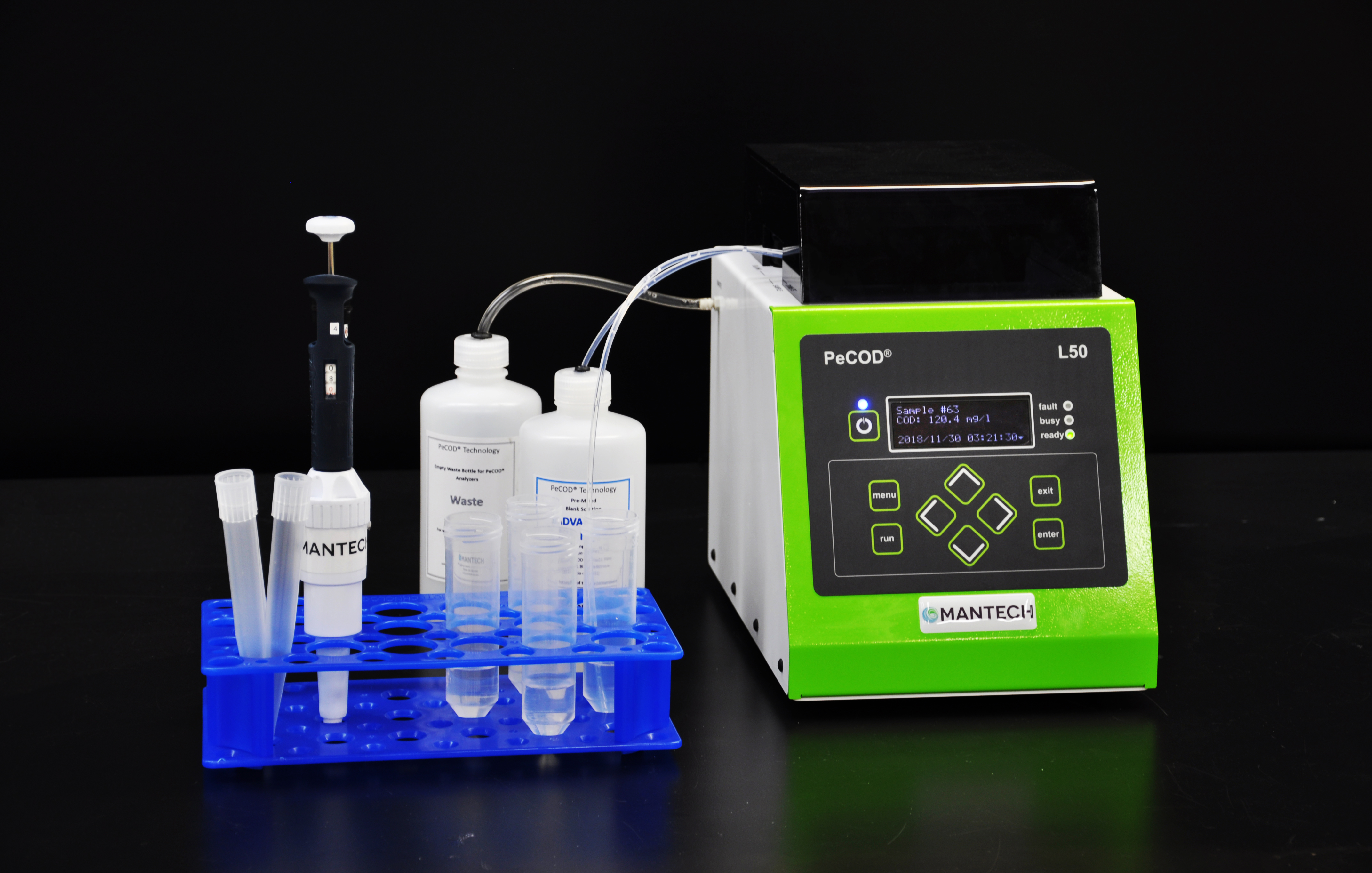MANTECH CEO Robert Menegotto got a lot of puzzled looks when he first started marketing his company’s chemical oxygen demand (COD) analyzer to drinking water plants. “You need to go talk to the wastewater folks,” they told him. “We just don’t do COD in drinking water.”
For years, wastewater plant operators have used COD — a measure of the reactivity of organic material in the wastewater — to monitor the effectiveness of their treatment processes. However, few drinking water plants have bothered with it. That’s not surprising, since there are currently no regulations requiring it. Plus, conventional COD testing is a three-hour process that must be done in a lab and doesn’t detect low levels of organic materials.
The case for monitoring NOM in drinking water
But Menegotto knew that offering a fast, simple way to analyze COD would help operators track the fluctuating levels of natural organic matter (NOM): the decaying leaves, soil particles, algae and other organic molecules found in drinking water sources.
NOM isn’t a direct concern to health. But it can affect the efficacy of drinking water treatment. It can react with the chlorine used for disinfection, creating potentially carcinogenic byproducts. It can foul membranes and increase the need for coagulants. Because it’s a food source for bacteria, it can lead to the development of biofilm in the distribution system. It can also create undesirable tastes, odours and colours.
Monitoring NOM levels allows operators to make timely treatment adjustments, avoiding these issues, optimizing the amount of chlorine and coagulant use, and reducing operating costs.
MANTECH’s PeCOD Analyzer is well established for wastewater applications. In collaboration with Dalhousie University’s Centre for Water Resource Studies (CWRS), the company has more recently developed a new application specifically for drinking water with the aim of producing results in a matter of minutes. Its photoelectrochemical approach, based on UV-activated titanium dioxide nanoparticles, is sensitive enough to measure the levels of reactive NOM typically found in drinking water. There is no requirement to correlate it, site by site, to laboratory results as with other methods. And unlike the standard COD test, the PeCOD Analyzer doesn’t use toxic chemicals.
“PeCOD is a true empirical measurement,” says Menegotto. “You can count on it.”
New federal recommendations, new market opportunities
The drinking water application was a great innovation in search of a market. When MANTECH launched the analyzer in 2013, a few forward-looking utilities recognized its value. Niagara Region used it to monitor taste and odour issues. American Water — America’s biggest publicly traded water and wastewater utility company — was another early customer.
But without regulations to drive awareness, selling the PeCOD Analyzer to drinking water plants required a lot of customer education.
Then, Menegotto got an email from Health Canada. The federal department was developing recommendations around NOM and wanted details about the PeCOD process. “I was floored,” says Menegotto. “The NOM proposed guidance is the first of its kind in the world.”
Presented at the Ontario Water Works Association’s 2019 conference, the new Health Canada guidance advocates an effective NOM control strategy, include monitoring NOM concentration and character in raw, treated and distribution system water. “Although NOM does not have direct health effects,” the document says, “it critically affects drinking water treatment and can contribute to indirect health impacts, as well as operational and aesthetic issues.”
Health Canada’s guidance notes that NOM can’t be measured directly, but describes the “surrogates” that can be used to provide an indication of the NOM concentration. It specifically cites COD as an indicator of oxidizable (reactive) NOM, but notes that historically the test for COD is not sensitive enough for drinking water. The development and commercial availability of the more sensitive peCOD method led to its inclusion as a guiding NOM parameter for the first time. For MANTECH, that recognition opens up new markets. “It’s going to start an important consideration of COD in effective NOM control strategies,” says Menegotto. “And then, business-wise, I think we’re going to see plants adopt it.”
Regulations drive success
Menegotto believes federal and provincial water quality regulations have helped to drive southern Ontario’s thriving water technology and sensor industry. “It’s created an innovation culture for water,” he explains.
Strategic government investments have also played an important role. The Advancing Water Technologies (AWT) program was created by the Southern Ontario Water Consortium (SOWC) with support from the Federal Economic Development Agency for Southern Ontario (FedDev Ontario). An AWT project allowed MANTECH to work with the University of Toronto’s Drinking Water Research Group and Trent Water to pilot the new analyzer, work out the bugs and generate crucial data.
“The SOWC program is helping water innovations prove themselves,” Menegotto says. “It’s quite unique.”
The Guelph company also got a boost from WaterTAP, a provincial accelerator established to promote Ontario’s water technology sector, which shut down earlier this year.
Today, MANTECH is selling its products in 45 countries around the world: to wastewater plants, breweries, pulp and paper companies, environmental labs and university research labs. Moving forward, Menegotto expects to add more drinking water plants to the list — especially in northern Europe, where climate change is creating higher and variable NOM levels.
The big challenge, he says, is the conservative nature of water utilities. Because they don’t want to take risks with public health, it’s difficult for new technologies to get adopted.
But thanks to Health Canada’s new guidance document, CWRS’s research findings and the results from the AWT-funded pilot, he believes drinking water plants will see value in measuring NOM COD — and recognize how the PeCOD Analyzer can empower them to do it quickly, effectively and affordably.


